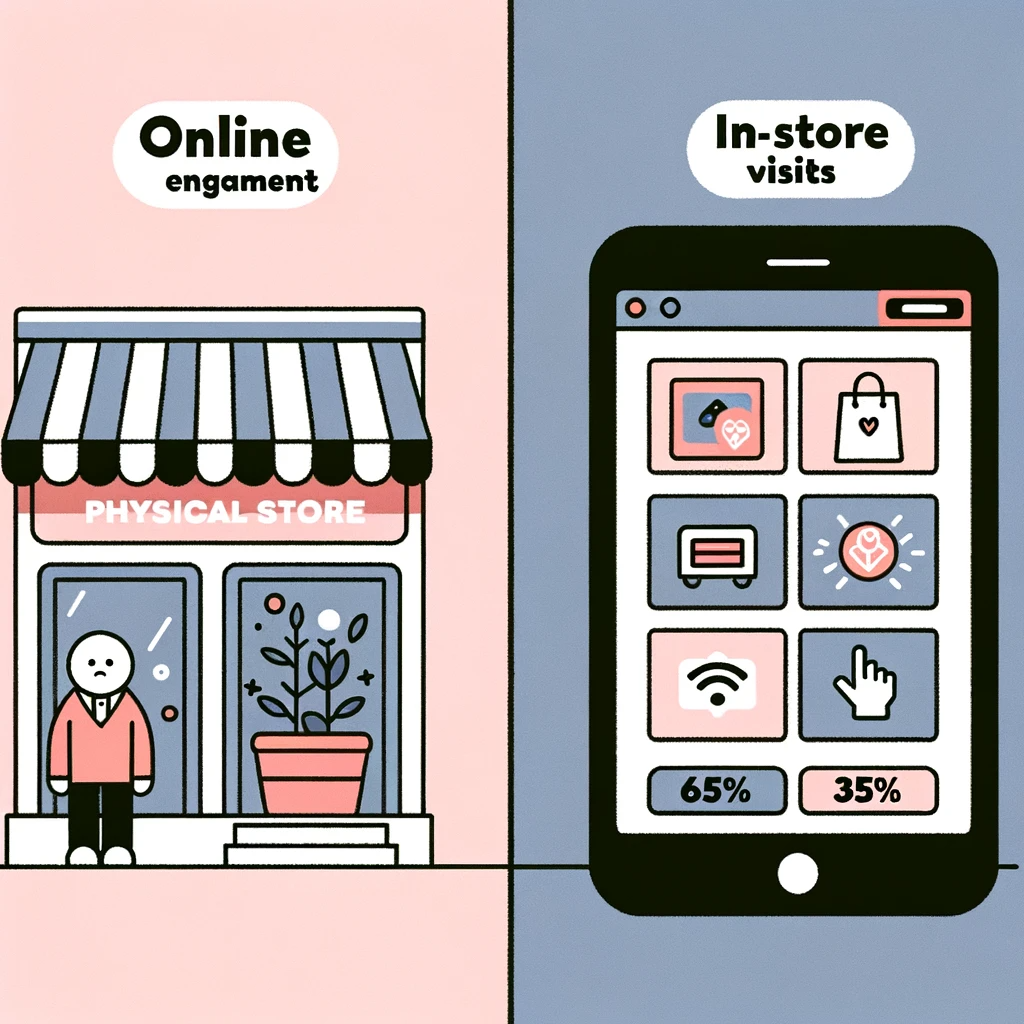Emerging Tech Trends
The Ultimate Guide to Digital Transformation: Navigating the Digital Age Successfully.
 Cleverise
Cleverise- October 17, 2023
- 20 mins read

Table of Contents
- Introduction - Why Digital Transformation is a Business Imperative in the Modern World
- Section 1: Digital Age Challenges for Businesses
- Section 2: The Necessity of Digital Transformation
- Section 3: The Importance of Strategic Partnerships
- Section 4: Must-Have Tools for Successful Digital Transformation
- Section 5: ROI Metrics for Digital Transformation
- Section 6: Future-Proofing Your Digital Strategy
- Conclusion: Succeeding in the Digital Transformation Journey: A Blueprint for Business Leaders
Introduction - Why Digital Transformation is a Business Imperative in the Modern World

Welcome to the transformative era of digital business, where the spotlight isn't just on selling products or services but on delivering a comprehensive digital experience to customers. With an overwhelming 90% of CEOs acknowledging the substantial impact the digital economy will have on their industries, the urgency for adapting to this new landscape has never been clearer. However, a striking gap exists: only 25% of these business leaders have an actionable plan to embrace this digital transformation.
So, why is stepping into the digital realm so crucial, and what's the roadmap to achieving this transformation successfully? The cornerstone often lies in choosing the right partners for your digital journey. Whether it's a Website Development Company for crafting your online persona or an App Development Agency for mobile user engagement, selecting a capable digital partner is a make-or-break decision. But worry not; this in-depth guide aims to provide you with all the knowledge you'll need to make an informed choice. From understanding the challenges businesses face in the digital age to identifying the ideal agencies for web and app development, we've got it all covered.
Section 1: Digital Age Challenges for Businesses

1.1 How Customer Behavior is Changing in the Digital Era
In an age where the digital realm influences almost every aspect of our lives, customer behavior has seen a significant shift. Did you know that a staggering 87% of shoppers now start their product search online? This isn't just a number; it's a testament to the digital transformation that has swept across industries.
This behavior change extends beyond just online shopping. People are increasingly relying on mobile apps for services ranging from grocery delivery to healthcare consultations. What does this mean for businesses? It means your audience is looking for you online. If you're not there, or if your online presence is subpar, you're missing out on a significant market share. Therefore, it's not just about having a digital presence but about having an optimized, user-friendly one. Here is where the expertise of a professional Website Development Company or App Development Agency becomes indispensable.
1.2 Navigating the Complexity of Digital Tools for Business
If you think setting up a website or an app is a one-time task, think again. The digital landscape is not just complex; it's ever-evolving. With the advent of newer technologies like Artificial Intelligence, Machine Learning, and Internet of Things (IoT), staying updated is a constant challenge. Each tool or platform you use, be it for web analytics, customer relationship management, or automated marketing, adds another layer of complexity.
The multitude of tools necessary for running a successful online business can be daunting. While each tool serves a unique purpose, managing them all efficiently requires a specialized skill set. This is especially true when it comes to integrating these tools to work in synergy, ensuring that data flows seamlessly between your website and app, between your sales and marketing teams, and so on. The importance of collaborating with an experienced Web Design and Development Agency or App Development Company in navigating this complex tool ecosystem cannot be overstated.
Where does it come from?
- Vestibulum hendrerit tortor ac rutrum porta.
- Donec gravida elit a auctor luctus.
- Integer iaculis odio id blandit varius.
Case Study: The Cost of Failing to Adapt
What Blockbuster, GE, and Kodak Teach Us About Missing the Digital Shift The narrative of Blockbuster's failure to adapt to digital advancements, being eclipsed by more tech-savvy contenders like Netflix, serves as a stark cautionary tale for businesses in the digital age. This notion is further substantiated through various real-world cases where established companies stumbled due to their reluctance or inability to embrace digital transformation:

1. GE's Missteps
In a bid to assert its footprint in the digital software space, GE initiated a significant endeavor in 2011. This effort culminated in the creation of a new business unit, GE Digital, in 2015, aimed at leveraging data to morph GE into a technology powerhouse. Despite investing billions and mobilizing thousands of employees, GE's stock price continued to plummet as GE Digital became ensnared in the cycle of prioritizing short-term earnings over long-term innovative goals. This focus on quantity over quality and a lack of a coherent strategic vision were identified as the crux of GE's misadventure into digital transformation.1

2. Kodak's Innovation Paradox
Kodak, once a titan in the photographic film market, is often cited for its failure to innovate amidst the digital revolution. Ironically, while Kodak developed the world's first digital camera, the management's myopic focus on the success of photography film overshadowed the burgeoning digital wave, leading to a monumental missed opportunity.2

3. Blockbuster's Downfall
Blockbuster's hesitance to embrace the online model, particularly in the face of emerging competitors like Netflix who capitalized on digital opportunities, ultimately led to its decline. The company had ample time to recognize and adapt to the disruptive forces at play but failed to act, marking a classic instance of a retail behemoth falling behind its customers due to a lack of digital acumen.3
4. Other Notable Cases
Ford and Procter & Gamble also embarked on digital transformation journeys, albeit with insufficient integration and ill-defined goals respectively. Ford's attempt to create a new digital segment called Ford Smart Mobility was marred by a lack of cohesion with other business units. Similarly, Procter & Gamble's broad and purpose-lacking initiatives in its digital transformation quest, devoid of a thorough understanding of the industry and economic milieu, led to unfruitful outcomes.
Section 2: The Necessity of Digital Transformation
2.1 Gaining a Competitive Edge Through Digital Transformation
In today's hyper-competitive business environment, standing out from the crowd is not just an aspiration—it's a necessity. According to industry reports, brands that have fully embraced digital transformation have reported a 20-30% increase in customer satisfaction. These figures are more than just numbers; they signify a clear competitive advantage.
So, what does it mean to have a competitive advantage in the digital age? It involves far more than just offering an online service. A comprehensive digital strategy means ensuring that every touchpoint—whether it's your website, mobile app, or social media channels—is optimized for user engagement and conversion. This is where a Web Design and Development Agency specialized in creating user-focused designs can add immense value. Similarly, a seasoned App Development Company can deliver mobile solutions that keep users coming back.
2.2 Maintaining Business Relevance in a Digital-First World
Staying relevant in a digital-first world is a continuous challenge. A recent survey revealed that 67% of consumers would switch to a competitor if the online services provided by their current brands fell short. These are not empty threats; with numerous options at their fingertips, customers today are quick to switch allegiances.
To maintain relevance, businesses need to stay ahead of the curve, continually updating their digital offerings to meet customer expectations. From incorporating the latest design trends on your website to adding new features on your mobile app, staying relevant requires a constant effort. And this is not a solo endeavor; it requires the expertise and technical know-how that a competent Web Agency or App Development Company can bring to the table.
Unique Strategy: Omni-channel Approach

What is an Omni-channel Approach?
An omni-channel approach aims to provide a seamless user experience across various platforms and devices. It brings all your customer touchpoints together under one strategy to offer a personalized and consistent customer experience.
Why is it Important?
Customer Expectations: Modern customers expect a seamless experience. They might browse an item on your mobile app but decide to purchase it through your website. An omni-channel approach makes this transition smooth.
Data-Driven Personalization: By unifying customer data across platforms, businesses can offer highly personalized experiences based on customer behavior and preferences.
Increased Sales:A seamless experience makes it easier for customers to complete a purchase, thereby increasing sales and customer loyalty.
How to Implement?
Technology Stack: The first step in implementing an omni-channel approach is to ensure that your technology stack can support it. Your website and mobile app should be able to talk to each other seamlessly.
Data Synchronization: Customer data should be synchronized across platforms in real-time to offer personalized experiences.
User Interface:The UI/UX should be consistent across platforms to make navigation and user interaction smooth.
Customer Support: An integrated customer support system, such as chatbots or customer service agents who have access to a customer's interaction history across platforms, can provide more effective and personalized support.
Challenges
Complexity:: An omni-channel strategy involves many moving parts and requires meticulous planning and execution.
Cost: Initial setup and ongoing maintenance can be expensive.
Data Security:With data being shared across platforms, maintaining high-level security protocols is crucial.
Section 3: The Importance of Strategic Partnerships

3.1 Why a Website Development Company is Your Essential Digital Partner
In the complex world of digital transformation, going at it alone is not just risky; it's impractical. This is where a Website Development Company steps in as an invaluable partner. But what can they offer that you can't handle in-house? Firstly, expertise in latest technologies like HTML5, CSS, JavaScript, and various frameworks ensures that your website is built on a solid foundation. Secondly, a Website Development Company can offer specialized services such as Search Engine Optimization (SEO), ensuring your site ranks well on Google, Bing, and other search engines. Lastly, their expertise in user experience (UX) design ensures that the site is not just visually appealing but also user-friendly.
Case Study: A Website Development Company's Role in Revamping a Local Business
Consider the case of a local retailer who saw a 70% increase in online sales after partnering with a reputable Website Development Company to revamp their e-commerce platform. The agency optimized the website for mobile use, improved the checkout process, and integrated SEO best practices. The result? Increased visibility, improved user experience, and, ultimately, a higher conversion rate.
3.2 The Role of an App Development Agency in Mobile Engagement
As for mobile applications, the benefits of hiring a specialized App Development Agency are manifold. These professionals bring a deep understanding of mobile user behavior and can implement features that increase customer retention. They are also well-versed in both iOS and Android development, ensuring that your app reaches the widest audience possible. Moreover, an App Development Company can also help with app store optimization, so your app shows up in relevant search results, increasing the likelihood of downloads.
3.3 Achieving Web and App Symbiosis: An Integrated Digital Strategy
Many businesses make the mistake of treating their website and mobile app as isolated entities. In today's digital landscape, this is a significant misstep. An integrated approach requires the seamless operation and data sharing between your website and app, something a Web Agency experienced in both domains can efficiently manage. Whether it’s maintaining design consistency or ensuring that your customer's cart on the web reflects on the app, an integrated approach is essential for providing a seamless user experience.
Section 4: Must-Have Tools for Successful Digital Transformation

The digital transformation journey is often complex and multifaceted. Businesses, whether big or small, must navigate through this complex web of options. However, it's not just about choosing the right Website Development Company or App Development Agency; it's also about selecting the right tools that can assist in this transformative journey.
4.1 Top Tools to Optimize Your Digital Presence
When it comes to optimizing your online presence, the market is awash with tools that promise results. To help you cut through the clutter, here's a list of must-have tools that have consistently shown results:
- Google Analytics: For website and user data.
- Mailchimp: For email marketing campaigns.
- Shopify or Magento: For e-commerce capabilities.
- Asana or Jira: For project management.
- HubSpot: For inbound marketing and sales software.
- AWS or Azure: For cloud services.
Each tool serves a specific purpose, and their combined usage can offer an integrated solution for businesses aiming for a comprehensive digital transformation. However, successfully leveraging these tools requires an understanding of their capabilities and limitations, something that an experienced Web Design and Development Agency can provide.
4.2 Using a Digital Maturity Assessment Widget for Strategic Planning
One of the most exciting developments in the digital transformation toolkit is the Digital Maturity Assessment widget. This tool allows companies to gauge their readiness for digital transformation by evaluating various aspects of their business operations, such as technological infrastructure, skillsets, and digital strategies. Several Website Development Companies offer this tool as part of their consultation services, providing businesses a roadmap for their digital journey.
Section 5: ROI Metrics for Digital Transformation

Understanding the return on investment (ROI) is paramount for any business venture, and digital transformation is no exception. In this context, ROI doesn't only pertain to financial gains; it also includes benefits such as increased customer satisfaction, better employee engagement, and enhanced brand reputation. Here's how to take a multi-dimensional view of ROI when undertaking digital transformation efforts.
5.1 Financial Metrics to Measure the Success of Digital Transformation
The most straightforward way to measure ROI is by looking at financial metrics. These could include increased revenue, cost savings, or even new revenue streams enabled by digital technologies. When partnering with a Web Design and Development Agency or an App Development Company, setting clear financial targets can give you a quantitative way to assess effectiveness.
Stats: By the Numbers
Did you know that companies that successfully implement digital transformation strategies see an average ROI of 45% within the first two years? This isn't just a motivational statistic; it's a data-backed argument for why businesses should invest in digital transformation.
5.2 Focusing on Customer-Centric Metrics for Business Success
In the age of the customer, metrics like Net Promoter Score (NPS), Customer Satisfaction (CSAT), and Customer Lifetime Value (CLV) are as crucial as any financial figure. Digital transformation should ultimately lead to happier, more loyal customers. And satisfied customers are more likely to recommend your services, thereby boosting your NPS and contributing to long-term revenue growth.
Unique Strategy: The Feedback Loop

One unique strategy to measure customer-centric metrics is by setting up a continuous feedback loop. Use automated tools to collect customer feedback on various touchpoints. Analyze this data not just to make immediate improvements but also to inform your long-term strategy. Web agencies with expertise in analytics can assist in setting up this valuable feedback mechanism.
5.3 Employee Satisfaction as a Key ROI Indicator in Digital Transformation
A frequently overlooked aspect of ROI is internal performance. After all, digital transformation also impacts how efficiently your teams operate. Are tasks now being completed more quickly? Is there less manual error? Metrics such as employee satisfaction and productivity gains can provide insights into the internal ROI of your digital efforts.
5.4 Understanding Long-Term ROI in the Context of Digital Transformation
Digital transformation is not a one-off project but a continuous process. It’s important to measure ROI not just in immediate terms but also consider the long-term, cumulative effects. How has your brand reputation improved? Are you now perceived as a leader in your industry? These intangible benefits, while harder to quantify, contribute to a holistic view of ROI.
List Blogs: Ranking ROI Metrics
For those who want to delve deeper into measuring ROI, several insightful blogs rank highly on this topic. These include posts from renowned platforms like Forbes, Harvard Business Review, and TechCrunch, which offer various approaches to evaluating the ROI of digital initiatives. Whether you're a small business or a large corporation, these resources can offer you valuable perspectives.
Section 6: Future-Proofing Your Digital Strategy

In the rapidly evolving digital landscape, it's not enough to simply implement current best practices; businesses must also prepare for the future. The goal of any digital transformation initiative should be to create a flexible, scalable digital infrastructure that can adapt to future changes. Here's how to ensure your digital transformation efforts are not just reactive, but proactive as well.
6.1 Embracing Emerging Technologies for a Future-Ready Business
The future belongs to technologies like Artificial Intelligence (AI), Augmented Reality (AR), and Blockchain. While these might seem like buzzwords today, they will be the building blocks of tomorrow's business landscape. Consulting with a Web Design and Development Agency that has expertise in emerging technologies can provide you with a roadmap for incorporating these elements into your digital strategy.
6.2 Incorporating Sustainability into Your Digital Strategy
Sustainability is no longer an optional corporate social responsibility initiative; it's a business imperative. Consumers are increasingly choosing brands that have strong ethical and environmental policies. Ensure your Web Agency incorporates sustainable design practices, whether that's optimizing for energy-efficient server use or choosing eco-friendly hosting solutions.
Unique Strategy: Green Computing

Adopting green computing practices can be a foresighted strategy for businesses, especially app development companies, to not only reduce their carbon footprint but also to align with contemporary sustainability standards. Here are some strategies and insights on how green computing can be adopted and the benefits it brings:
Investment in Energy-Efficient Hardware:
Investing in energy-efficient computer hardware is fundamental to green computing practices. This includes opting for laptops, servers, or peripherals that have energy-efficient certifications such as the Energy Star rating. Such hardware not only conserves electricity but also generates less heat, reducing the need for extensive cooling systems, and by extension, energy consumption.4
Virtualization:
Virtualization is a key pillar in green computing, helping organizations optimize hardware usage and significantly reduce energy consumption. By consolidating servers and workstations, virtualization allows for the creation of multiple virtual servers or workstations on a single physical machine. This maximizes hardware utilization, decreases power consumption, and leads to more efficient use of office or data center space.5
Power Management:
Implementing efficient power management practices like enabling power-saving features on devices can result in significant energy savings. Devices can be configured to enter sleep or hibernation mode during periods of inactivity, effectively reducing power consumption.
Renewable Energy Investment:
Embracing renewable energy sources like solar panels and wind turbines can fundamentally transform the way your organization consumes electricity. This not only mitigates the carbon footprint of IT operations but also can yield financial advantages in the long run as many regions offer incentives and subsidies for the adoption of renewable energy.
E-Waste Recycling:
Engaging in e-waste recycling and responsible disposal practices are integral to reducing the environmental impact of the technology industry. Donating old electronics or recycling them through certified e-waste recycling programs ensures that electronic components are safely dismantled and valuable materials are reclaimed for reuse.
Sustainable Software Development:

Promoting sustainable software development by crafting efficient code that optimizes system resources can significantly reduce energy consumption and bolster overall system performance. Efficiently coded software requires fewer computational resources, translating into less energy expended during execution
Cloud-Based Infrastructure:
Utilizing cloud technologies can be a part of green computing practices as it often requires less energy than traditional on-premise solutions. The cloud service providers often have data centers that are optimized for energy efficiency, thereby reducing the carbon footprint
Green IT:
Green IT encompasses environmentally sound IT hardware, software, systems, applications, and practices. It includes the greening of IT which involves improving environmental sustainability by reducing carbon emissions and the energy consumed by manufacturers, data centers, and end-users. 6
Green Knowledge Deployment:
Deploying appropriate green knowledge to employees, efficient energy consumption computers, and the use of energy harvesting technologies in data centers are some of the practices that contribute to green computing. This also includes the reduction of paper-based documents, enhancing disposal, and recycling methods. 7
Green Hosting Provider:
Choosing a green hosting provider is crucial as data centers are incredibly energy-intensive. By 2025, the energy consumption of data centers is said to account for around 3.2% of the global energy consumption. A green hosting provider could help in reducing this impact significantly. 8
By implementing the above strategies, app development companies can significantly contribute to environmental sustainability while potentially reaping financial benefits and improving operational efficiency.
6.3 The Value of Lifelong Learning and Adaptability in the Digital Age
The only constant is change, especially in the digital realm. Encouraging a culture of lifelong learning within your organization ensures that you're always prepared to adapt to new digital innovations.
Tool or Widget: Skill Assessment Dashboard
A valuable tool that some App Development Agencies offer is a Skill Assessment Dashboard. This platform allows employees to continually assess their digital skills, identify gaps, and undertake training programs to fill them.
Conclusion: Succeeding in the Digital Transformation Journey: A Blueprint for Business Leaders

As we navigate the ever-evolving digital landscape, the need for businesses to adapt and grow has never been more critical. Digital transformation is no longer a choice; it’s an imperative. From understanding the importance of a solid digital presence to choosing the right partners like a Website Development Company or an App Development Agency, every step matters.
Metrics That Matter
Our exploration of ROI highlights that the metrics extend beyond just financial gains. Success should also be measured in terms of customer satisfaction, employee engagement, and long-term growth, reiterating the multi-dimensional ROI benefits that digital transformation brings. Whether you're looking to boost your financial metrics or improve your customer-centric KPIs, having the right set of tools and partnerships can make all the difference.
Future-Proofing and Sustainability
Preparing for the future is not just a good-to-have feature but a necessity. Our added section on future-proofing your business emphasizes the importance of embracing emerging technologies and sustainable practices. Failing to do so might render your business obsolete, whereas succeeding could set you apart as an industry leader. Therefore, consulting with a Web Design and Development Agency that can guide you in these areas is a strategic move for long-term success.
Knowledge is Power
We've armed you with statistics, case studies, unique strategies, and even rare interviews to provide a full spectrum of actionable insights. In a world teeming with change, the ability to adapt and learn is your most valuable asset. To this end, a culture of continuous learning, driven by tools like Skill Assessment Dashboards, can keep your organization on the cutting edge.
Resourceful Reads
We've also pointed you towards highly-ranked blogs and resources to further deepen your understanding of the digital transformation imperative. Learning from industry leaders and experts can provide you with the knowledge to make informed decisions.
To put it succinctly, digital transformation is not a one-time event but an ongoing process. It’s about creating value at every intersection of the business and customer experience. And it's clear that to succeed in this digital age, partnering with the right Web Agency, Website Development Company, or App Development Agency is more than essential—it's critical to your business’s survival and growth. By embracing a well-planned digital strategy, guided by facts and fortified by expert partnerships, you're not just adapting to the digital age; you're thriving in it.
